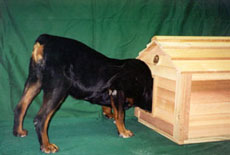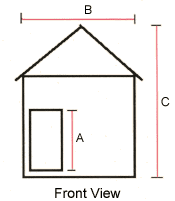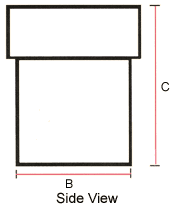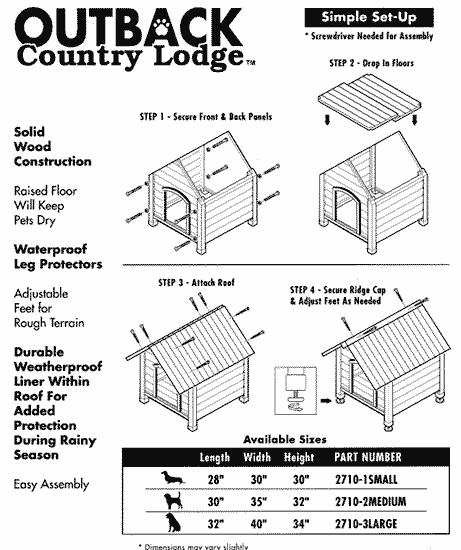 How
To Choose The Right Size Dog House
How
To Choose The Right Size Dog House
 Most often we use a dog's
weight to determine the size dog house they will need. It is also important to
consider the dog's measurements. Some dogs are tall structured, i.e.,
Doberman Pincers and Greyhounds, so height requirements are as important a
consideration as weight. Ideally, the dog house
needs to be just big enough for the dog to enter, turn around, and lie down.
Anything dog house larger than that is at your discretion.
Most often we use a dog's
weight to determine the size dog house they will need. It is also important to
consider the dog's measurements. Some dogs are tall structured, i.e.,
Doberman Pincers and Greyhounds, so height requirements are as important a
consideration as weight. Ideally, the dog house
needs to be just big enough for the dog to enter, turn around, and lie down.
Anything dog house larger than that is at your discretion.
During the colder months, your dog's body heat
retention is somewhat sacrificed when the dog house is larger. In the warm
weather, this will be a benefit. Please keep your geographical location in
mind to help you decide which would be more suitable for your dog...a house that
is just right or one that will give them room to stretch and move around. Choosing the correct
size house ensures the comfort for your dog(s). If you live in a region with
severe winters, bigger is definitely NOT better. If your region has extremely
mild winters, a house "larger than necessary" does not present a problem.
Use this simple A-B-C method for determining the correct size doghouse. It might be helpful to print out as reference when measuring your dog and comparing to house dimensions.
 |
 |
 |
|
- The door height opening should be no less
than three fourths (3/4) of the dog's shoulder to ground measurement. LARGE
doors aren't necessary... dogs typically "duck" to enter a doghouse.
Example: If dog's "A" measurement is 19 inches, the door opening needs to be at least 14 inches tall.
- The width and length measurement of the house
should be the same as or no more than 25% larger than (B), the nose to flank
measurement (Tails don't count).
Example: If the dog's "B" measurement is 24 inches, the doghouse width and length should be no less than 24 inches and no more than 30 inches.
- The height of the dog house should be at least
25% (no more than 50%) taller than the height of the top of the dog's head to
his toes (C). Again, this house measurement (C) can exceed the dog's total
height (C) up to 50% and still maintain a good body heat retention factor
during cold months.
Example: If the dog's height is 22 inches, then the total doghouse height should be approximately 28 to 33 inches.
|
